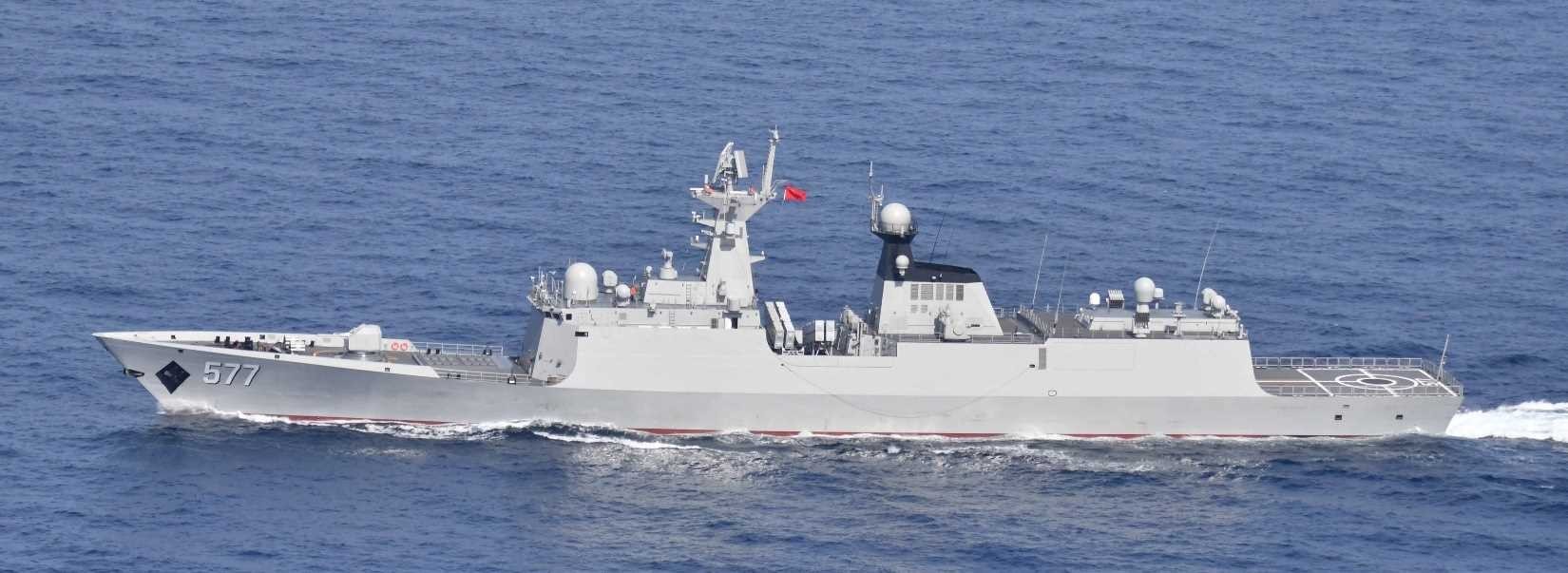Chinese warships first spotted sailing near Australia a week ago are now moving far south along its east coast, further escalating tensions between the two countries. The development comes as the Commander of the US Indo-Pacific Command, Samuel Paparo, is visiting Australia.
The three People’s Liberation Army Navy (PLAN) vessels reportedly include the Jiangkai-class frigate Hengyang, the Renhai-class cruiser Zunyi, and the Fuchi-class replenishment vessel Weishanhu.
The vessels were observed traversing the Coral Sea last week on their way to waters near the northeast of Queensland, Australia. At the time, the movement was understood to be routine even though it came immediately after a Chinese J-16 fighter jet fired flares in front of an Australian P-8A reconnaissance aircraft over the South China Sea.
However, in an unusual development this week, the warships have been noticed going far south on what is referred to as an “unknown mission.” Financial Times reported on February 19 that the Chinese vessels were seen 150 nautical miles off the coast of Sydney.
Notably, this is the furthest down the east coast of Australia that the Chinese ships have traveled. Beijing is seen as trying to normalize its power projection in Pacific waters, especially in the region that is traditionally considered an Australian bastion.
Australian Defense Minister Richard Marles told reporters that Royal Australian Air Force aircraft and naval vessels were monitoring the movements of the PLAN vessels in international waters within Australia’s exclusive economic zone (EEZ)—the region outside of its territorial borders where a country has exclusive economic rights.
The difference between a territorial sea and an EEZ is that the former confers full sovereignty over the waters, while the latter grants “sovereign rights” to the coastal state over the resources beneath the sea’s surface. The surface waters of an EEZ are considered international waters. Thus, it would not qualify as a breach of international law unless the ships enter Australia’s territorial waters.
The transit near Australia could be considered akin to the ‘Freedom of Navigation’ operations regularly undertaken by naval vessels belonging to the West in the Chinese backyard. Australian and US warships have traversed the South China Sea and the Taiwan Strait on multiple occasions.
Richard Marles said the movement was unusual but not unprecedented. “Just as they have a right to be in international waters… we have a right to be prudent and to make sure that we are surveilling them, which is what we are doing,” he added.
The Defense Minister further noted that his military was keeping tabs on the movement of the ships to assess the nature of their mission. “Whenever this mission is over on the part of the Chinese task group, we will assess everything we have seen to make a proper assessment of exactly what they were trying to achieve through this mission,” he said.
When Chinese Foreign Ministry spokesperson Guo Jiakun was asked about the movement of Chinese warships near Australia, he said he was not aware of the situation.
It is not uncommon for Chinese warships to appear near the waters of rival countries. For instance, the United States Coast Guard reported in July last year that it discovered three Chinese vessels approximately 124 miles (200 km) north of Amchitka Pass in the Aleutian Islands in the Northern Pacific Ocean.

However, while Australian authorities have projected the recent mission as innocuous, it could further damage ties between Canberra and Beijing.
Last week, for instance, the two sides engaged in a heated exchange when Australia protested the firing of flares in front of its aircraft. China hit back, saying the incident was a “deliberate intrusion” into its airspace. The Chinese foreign ministry said Australia “jeopardized” China’s national security.
The bilateral relationship between the two countries has been on a downward spiral for the last few years. Australia has been concerned with China’s onward march into the Pacific and forging ties with the Pacific Island Countries (PICs). For example, China signed a security agreement with Solomon’s Island in 2022, igniting fears that China could use the military base in the country to station its naval vessels there.
More recently, the newest Chinese Type 055 Guided Missile Destroyer, ‘Xianyang’ (108), docked at Port Vila in Vanuatu (just 3,700 kilometers from Australia) on October 21, 2024, unsettling Canberra.
On its part, Australia has closely aligned itself with the US to counter-balance the rising Chinese influence in the Indo-Pacific.
Despite these frictions, the two sides have made efforts to fix ties intermittently. Australia hosted the Chinese Foreign Minister Wang Yi last year after a gap of six years and claimed to have stabilized long-strained relations.
China’s Criticism In Australia
Intriguingly, the latest incident occurs while the Commander of the US Indo-Pacific Command, Samuel Paparo, is visiting Australia.
Admiral Samuel J. Paparo, commander of the U.S. Indo-Pacific Command, and U.S. Chargé d’Affaires to Australia Erika Olson participated in a think-tank discussion at the Australian National University in Canberra on February 19, 2025.
Paparo has consistently highlighted China’s growing military capability and expressed cynicism about its intentions. Earlier this month, Adm. Sam Paparo said the “aggressive maneuvers around Taiwan right now are not exercises as the Chinese military says,” adding the Chinese government is “on a dangerous course.”
Paparo said at the Honolulu Defense Forum that the Chinese operations, which included the deployment of numerous spy balloons, military aircraft, and navy vessels near Taiwan, are “rehearsals for the forced unification of Taiwan to the mainland.” Furthermore, he claimed that China’s “increasingly complex multi-domain operations demonstrate clear intent and improving capability.”
Similarly, in November 2024, Adm Paparo said China was America’s “most capable potential adversary in the world.”
Paparo also presented a concerning image of American preparedness, highlighting aging platforms, maintenance backlogs, and depleting ammunition supplies. He asserted, however, that the US still has a “generational advantage” in submarines and “war-winning advantages” in cyber, counter-space, and space.
- Contact the author at sakshi.tiwari9555 (at) gmail.com
- Follow EurAsian Times on Google News




